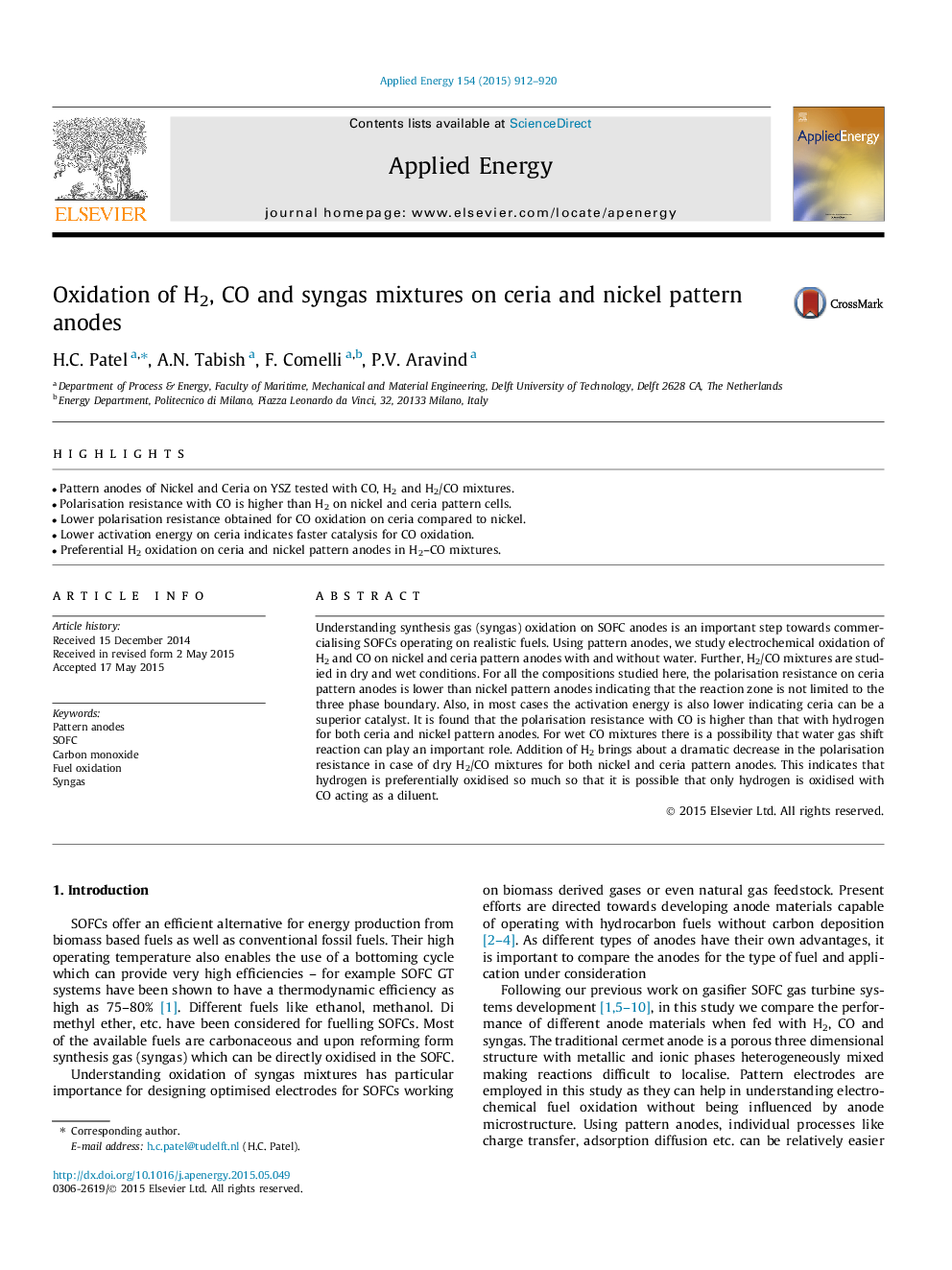| Article ID | Journal | Published Year | Pages | File Type |
|---|---|---|---|---|
| 6687056 | Applied Energy | 2015 | 9 Pages |
Abstract
Understanding synthesis gas (syngas) oxidation on SOFC anodes is an important step towards commercialising SOFCs operating on realistic fuels. Using pattern anodes, we study electrochemical oxidation of H2 and CO on nickel and ceria pattern anodes with and without water. Further, H2/CO mixtures are studied in dry and wet conditions. For all the compositions studied here, the polarisation resistance on ceria pattern anodes is lower than nickel pattern anodes indicating that the reaction zone is not limited to the three phase boundary. Also, in most cases the activation energy is also lower indicating ceria can be a superior catalyst. It is found that the polarisation resistance with CO is higher than that with hydrogen for both ceria and nickel pattern anodes. For wet CO mixtures there is a possibility that water gas shift reaction can play an important role. Addition of H2 brings about a dramatic decrease in the polarisation resistance in case of dry H2/CO mixtures for both nickel and ceria pattern anodes. This indicates that hydrogen is preferentially oxidised so much so that it is possible that only hydrogen is oxidised with CO acting as a diluent.
Related Topics
Physical Sciences and Engineering
Energy
Energy Engineering and Power Technology
Authors
H.C. Patel, A.N. Tabish, F. Comelli, P.V. Aravind,
